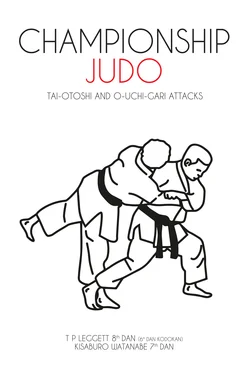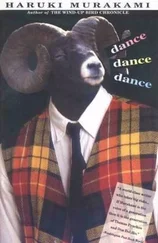The pulling hand is the left, and the little-finger edge of it should turn outwards. I should feel that I am pulling along the outer edge of my arm. This is an important point to which I shall return again and again.
Second Movement. Fig. 2 shows my left foot coming into position, the toes on one cord and the heel on the other, making a little triangle with the cords (this will be explained in detail later).
Figs. 2–4 show the right-hand action. From the beginning I must try to bring in my right hand, which means doubling up the elbow as much as I can. We all know how it is difficult to hold a weight at arm’s-length where it is easy if you hold it close to you, and the principle here is the same.
Beginners get so excited in the early stages that they tighten and stiffen the right shoulder and elbow; the result is that their right hand gives the opponent a sort of poke which actually forces him away instead of drawing him in.
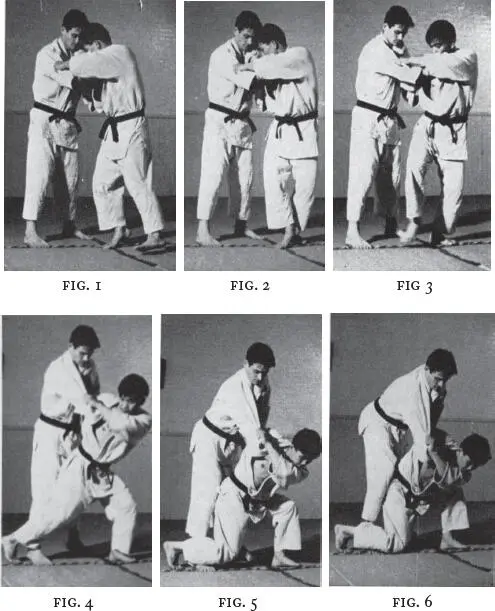
In Fig. 3 the right leg prepares to come in. Beginners also tend in their excitement to make this leg hard, and almost to kick out with it. Practise this movement, keeping the leg very soft.
In Fig. 4 the right leg shoots into position. I should not try to bring it tightly against the opponent’s leg, but perhaps two inches away. Notice that my right foot crosses the cord.
Third Movement (Figs. 5–8). The vital thing is to throw all the weight on to the hands. From a subconscious fear of falling, beginners hold back; they should practise using a chair, if necessary, to get the feel of it. See the section on Throwing the Weight in Taiotoshi.
Fig. 6 shows how low the knee goes. If it gets right down, it is easier for my pull to bring his shin on top of the leg.
In Fig. 8 I begin the springing-up action. I have got the opponent bending right over, and in fact I bear him up with the back of my right leg.
Fourth Movement. This is the actual execution of the throw, and needs no special explanation here – if the preceding movements are done well, it will come off by itself. Beginners on the contrary are in such a hurry to get on to this part that they leave out the previous moves and try to make up for everything with one big heave at the end. Such Judo always leads to failure, unless you are much stronger than your opponent, and even then it often does not score.
Now that you have had a look at the pictures and been told the main points, try it out roughly with an opponent. Don’t bother too much about getting all the points right; get the general movement first, say about twenty times. Then let your opponent try twenty times, and have a good look at what he is doing. It will help you to see what is wrong with your own attempts.
Don’t try to go too fast for your balance. On the other hand, don’t go so slowly that you stagger while transferring your weight. You can walk fast and you can walk slowly, but there comes a point when to go any slower means that you are no longer doing the same thing at all; the pace is no longer even and the movements have to be completely artificial.
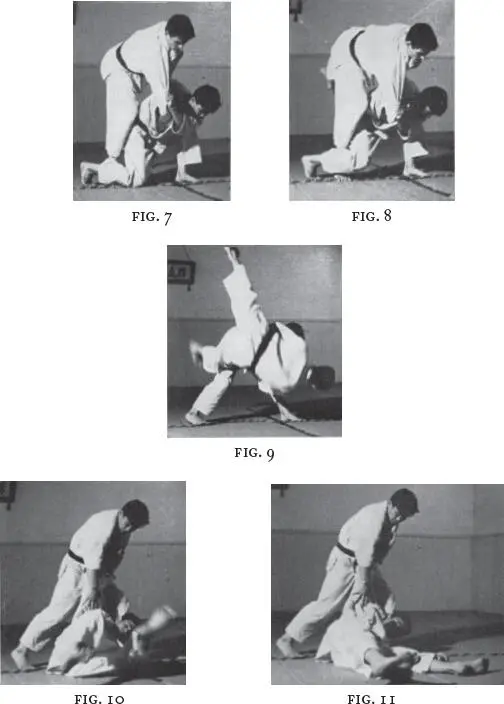
It’s the same in Judo movement; you should at the beginning take it very comfortably, but if you go too slow you find you are not comfortable.
When you have done the first round of twenty, do another round but taking up one of the points, such as the left arm pull. Never mind about the rest of the movement, whether it’s right or wrong, but get your left arm and shoulder working loose, moving more and more freely and going higher and more out. You will begin to get the feel of what it is like to make a very full wide pull. When you begin to get that feel, you can allow yourself to speed up naturally, bit by bit. But once you find that you’ve begun to skimp your pull, that you are just jerking briefly because you can’t find time to fit in the long pull, then reduce the speed until you can get it in.
Don’t expect to get everything right straight away, and don’t feel you must get one thing perfect before you move on to the next. People will tell you that if you are ‘practising it wrong’ you can’t improve. They imply that if you make mistakes at the beginning you will get worse and worse. Well, think of beginners learning to ride a bicycle. They keep falling off, but no one would accuse them of ‘practising it wrong’. They are feeling for a particular thing, the sense of balance, and they can’t expect to get it at once. In the same way in Judo you are feeling for the balance and rhythm of the throw, and you won’t get it for a good time. The instructions and analysis are to get your movement somewhat along the right lines; when you are doing something like it, one day you will find the opponent suddenly seems light and goes over with unexpected ease. Now that’s the first flash – and you should note very carefully how you ‘felt’ when it happened. All the descriptions and suggestions are only to get you to this point, and to bring you back to it when you lose it, as will happen again and again.
Uke can help. He should never give way like a reed in the wind, but hold himself firmly. At first he should not take any active counter-measures, but as you progress in the throw, after say about three months, your Ukes should brace their hips strongly so that you get the idea of hitting against something. Then your throws come in repeatedly like a succession of waves against a rock, and with something of that rhythm. This is for the static repetitions; the moving Uchikomi repetitions will be described later on.
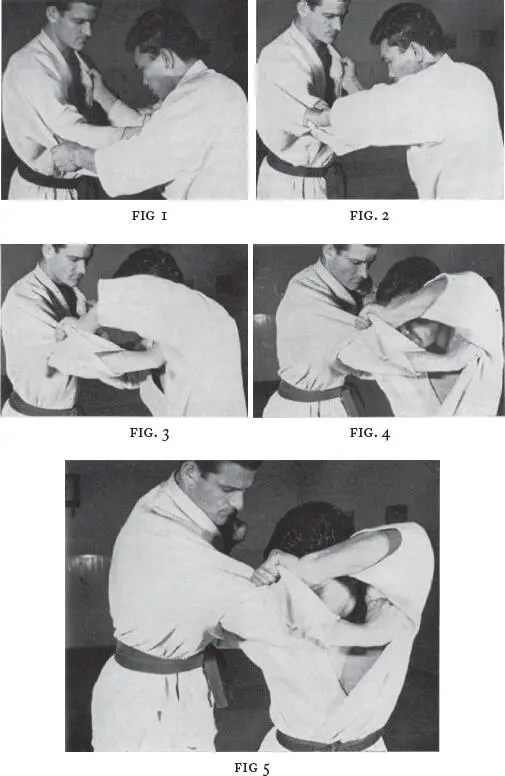
Конец ознакомительного фрагмента.
Текст предоставлен ООО «ЛитРес».
Прочитайте эту книгу целиком, купив полную легальную версию на ЛитРес.
Безопасно оплатить книгу можно банковской картой Visa, MasterCard, Maestro, со счета мобильного телефона, с платежного терминала, в салоне МТС или Связной, через PayPal, WebMoney, Яндекс.Деньги, QIWI Кошелек, бонусными картами или другим удобным Вам способом.
